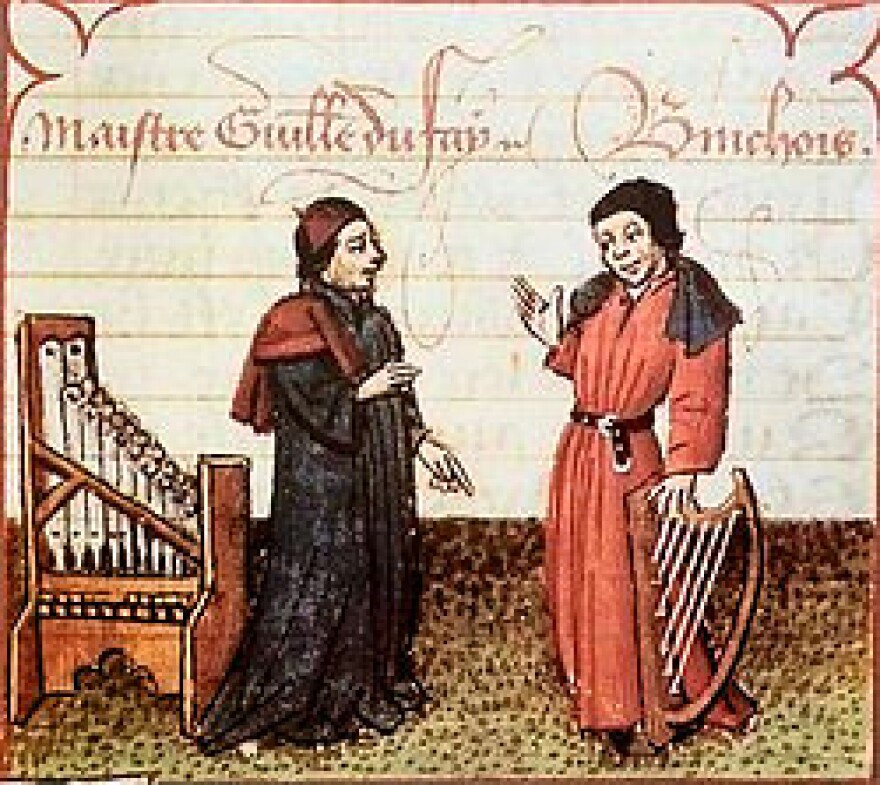This week, we’ll discuss the music of the 15th century French composer Guillaume Dufay and how the lines that defined secular and sacred music began to blur in the late Middle Ages and early Renaissance.
Guillaume Dufay was brought up as a choirboy in the Cambrai Cathedral in France. He learned his craft not from traditional academic study, but most likely from being a performer and serving as a music copyist for the older composers at the cathedral. As a young man, he was employed by the Malatesta family in Pesaro, Italy, where he was commissioned to write many secular works. He later returned to church work and eventually became a member of the most famous musical establishment of the time, the papal choir. Dufay had a long and successful career as a church musician and a composer of secular and sacred music. He was acknowledged by many of his contemporaries to be the leading composer of the day.
During the time of Dufay, a particular method of composition was developed for use in the church, especially for the composition of the mass. It was becoming standard practice to take an existing melody, a chant usually, something ancient and familiar, and use that as the basis, the foundation, of an entire work. The melody would be introduced in the lowest voice, called the tenor, where it was usually played or sung very slowly as new melodic lines where written on top in harmony. We call this a tenor mass.

An example of this is a secular French song, a ballade, by Guillaume Dufay entitled Se La Face Ay Pale. Later, Guillaume Dufay composed Missa Se La Face Ay Pale, which is a tenor mass that uses the ballade from Se La Face Ay Pale as the basis for the rest of the composition. Apparently, Dufay is the first composer to take a secular song and use it in a sacred context. What’s even more important is that Dufay used this technique so well that it influenced composers for the next century.




